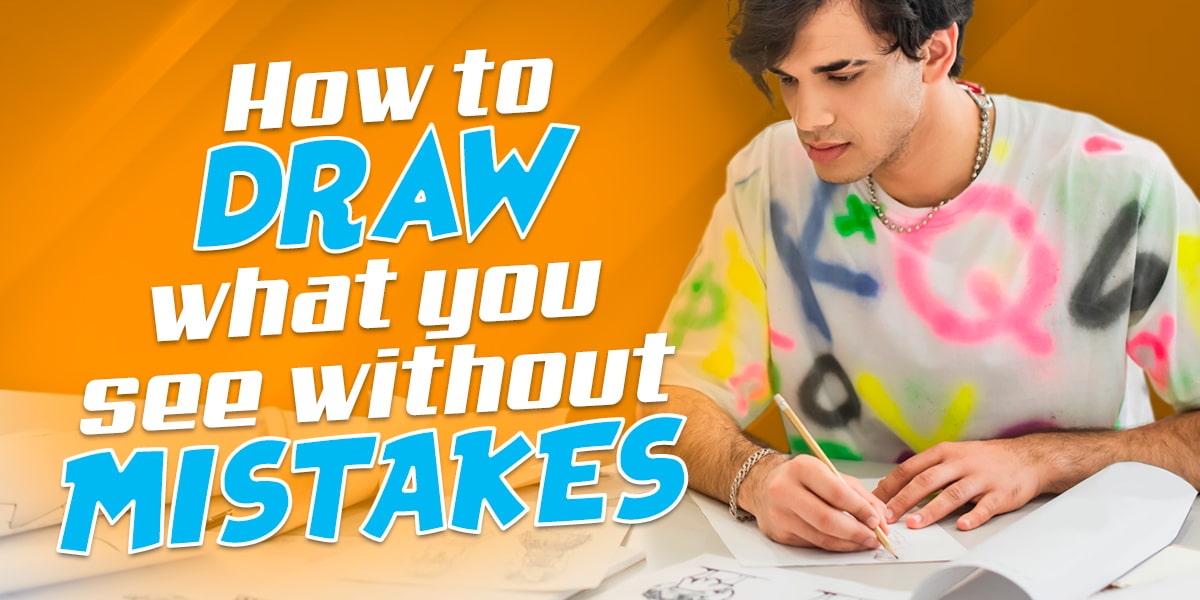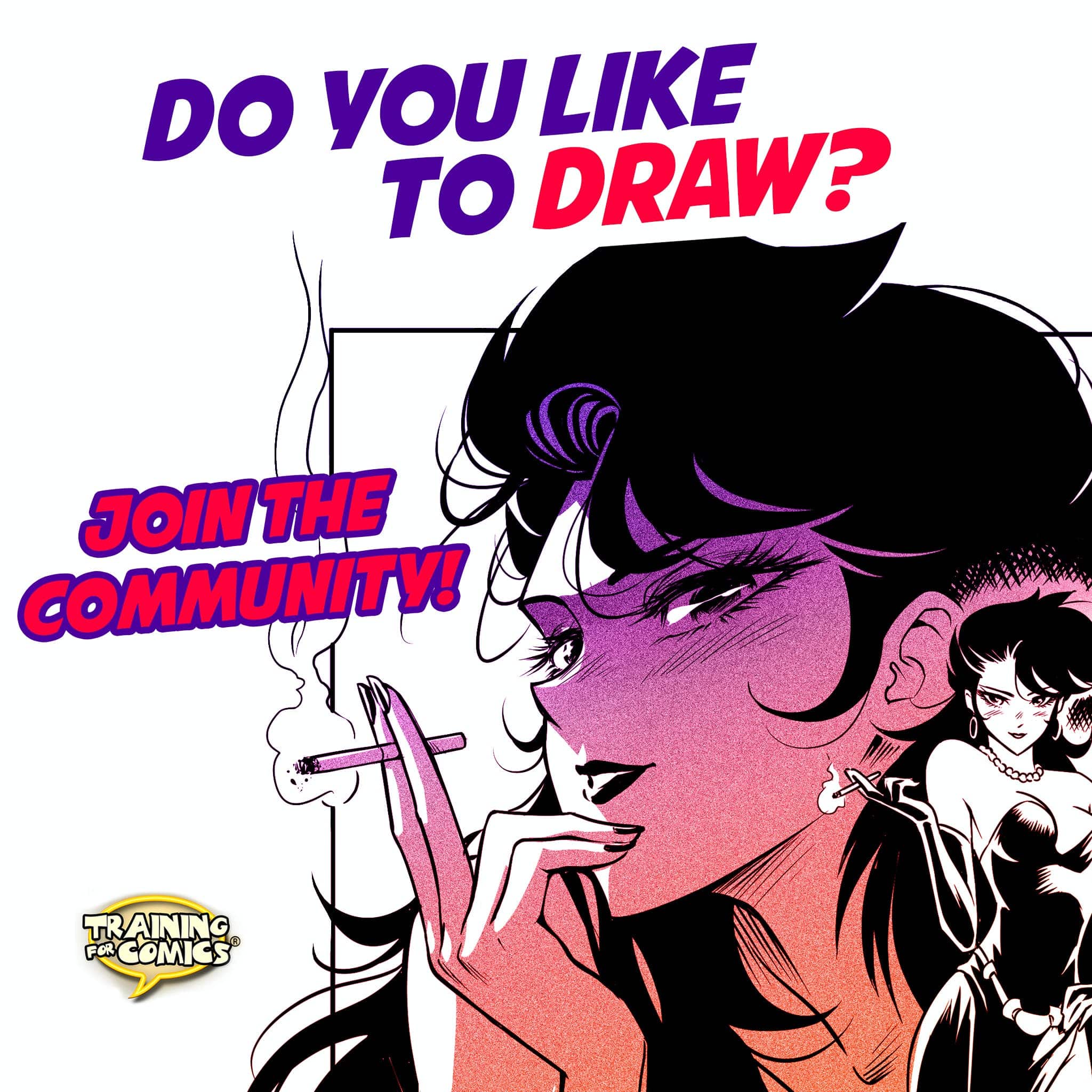Master the Art of Drawing What You See: A Complete Guide
Have you ever wished to capture the beauty of the world around you on paper, but didn’t know where to start? Have you wondered how artists manage to transform reality into such precise and evocative strokes? You’re about to discover the secrets behind the fascinating world of observational drawing. Get ready for a transformative journey that will awaken your senses and unleash your hidden artistic potential.
In this article, you’ll immerse yourself in the art of “drawing what you see,” a fundamental skill that every artist aspires to master. I’ll guide you step by step through proven techniques, expert tips, and practical exercises that will help you develop a keen eye and a steady hand. Whether you’re an enthusiastic beginner or an artist looking to refine your skills, you’ll find here the tools necessary to elevate your art to the next level.
So grab your pencil, prepare your sketchbook, and get ready to explore the world with new eyes. The adventure of observational drawing is about to begin!

The Art of Seeing: The Essence of Observational Drawing
Observational drawing is much more than simply copying what’s in front of you. It’s an intimate dialogue between the artist and the world, a delicate dance between perception and representation. Unlike imaginative drawing, where lines flow freely from your mind, observational drawing challenges you to interpret and translate three-dimensional reality into a two-dimensional medium.
In artistic teachings, this approach is known as drawing “from life,” referring to the fact that our source of inspiration is in nature and the tangible reality that surrounds us. It’s not about copying a photograph or inventing shapes, but about capturing the living and palpable essence of our environment.
This process requires a unique combination of skills: keen observation, creative interpretation, and technical proficiency. By practicing observational drawing, you not only improve your ability to visually represent the world, but you also train your eye to see with greater depth and detail. It’s an exercise that sharpens your senses and connects you more intimately with your surroundings.
But how do you master this art? How do we go from simply looking to really seeing? The key lies in following a series of guidelines and techniques that will guide you on this journey of visual discovery. Explore inspiring resources here to perfect your artistic vision and start seeing the world through the eyes of a true artist.
The Power of Focus: The Key to Capturing Essence

In the vast canvas of reality, learning to focus is crucial. Imagine you’re facing a bustling urban landscape or a lush forest. The amount of visual information can be overwhelming. How do you decide what to draw? This is where the art of focusing comes into play.
Focusing is not just about deciding what to draw, but also about determining what to leave out. It’s a process of selection and simplification that allows you to capture the essence of a scene without getting lost in unnecessary details. By focusing, you’re essentially composing your drawing, deciding which elements will be the protagonists of your work.
A simple but powerful tool to help you focus is the “viewfinder.” This device, which you can easily make at home with cardboard, paper, or wood, acts as a window to your subject. By looking through this frame, you can experiment with different compositions, isolate specific elements, and decide exactly which part of the scene you want to capture in your drawing.

To create your own viewfinder, follow these steps:
- Choose a rigid but lightweight material, such as cardboard or cardstock.
- Cut out a rectangle that has the same proportion as your drawing paper.
- In the center, cut out another smaller rectangle, leaving a frame at least 2-3 cm wide.
- Optionally, you can reinforce the edges with tape for greater durability.
When using your viewfinder, keep these tips in mind:
- Experiment with different distances. Move the frame closer or farther to include more or fewer elements in your composition.
- Try different angles. Rotate the frame to discover interesting compositions you might have overlooked.
- Use the frame to study the relationships between elements. Observe how objects align or contrast with each other within the frame.
- Don’t rush. Take the time necessary to explore different options before deciding on your final composition.
Remember, the goal of the viewfinder is not to limit your vision, but to help you see more clearly and purposefully. It’s a tool that helps you transform visual chaos into a coherent and attractive composition.

Mastering the art of focusing is a crucial step in your journey as an artist. It allows you to see the world not only as it is, but as it could be represented in your drawing. Discover advanced techniques here to refine your artistic focus and take your observational skills to the next level.
The Artist’s Posture: Preparing the Body for Art
Artistic creation involves not just the mind and hand; your entire body plays a crucial role in the drawing process. Proper posture not only helps you avoid fatigue and pain, but can also significantly improve the quality and fluidity of your strokes. Let’s see how you can optimize your posture to maximize your artistic potential.
Finding Your Ideal Position
The key to effective posture is finding a balance between comfort and functionality. Here are some fundamental principles:
- Body alignment: Keep your chest and view facing the model or scene you’re drawing. This allows for a clear and direct view of your subject.
- Optimal distance: Position yourself at a distance that allows you to encompass your entire subject without excessive effort. As a general rule, the distance should be approximately equal to the height or total size of what you’re drawing.
- Viewing angle: Ensure you can see both your paper and your subject without constantly having to move your head. An easel or inclined board can help achieve this.
- Arm support: Your arms should be comfortably supported, either on a table, on the armrests of your chair, or on your lap if you’re working in a sketchbook.

Adapting to the Environment
It’s important to recognize that you won’t always have full control over your drawing environment, especially if you’re working outdoors or in public spaces. In these cases, adaptability is key:
- Outdoor drawing: Consider bringing a folding chair or portable stool to maintain a comfortable posture even in remote locations.
- Limited spaces: In situations where you can’t move far enough away from your subject, practice “mental framing.” Imagine a frame around your subject and draw only what falls within that imaginary frame.
- Drawing in motion: If you’re drawing on a train or bus, make sure you have a firm support for your notebook and practice hand stability.
Exercises to Improve Posture
Incorporate these exercises into your routine to improve your posture and endurance while drawing:
- Neck stretch: Every 15-20 minutes, gently rotate your neck in circles to relieve tension.
- Shoulder rotation: Make circles with your shoulders forward and backward to keep them relaxed.
- Wrist flexion: Stretch your hands and wrists to prevent fatigue and improve circulation.
- Visual focus: Periodically look into the distance to rest your eyes from constant close focus.
Remember, the perfect posture is one that allows you to draw comfortably for long periods without fatigue or pain. Experiment with different positions and adjustments until you find what works best for you. Explore more ergonomic tips for artists here and discover how to optimize your workspace for more comfortable and efficient artistic creation.
From General to Particular: The Path to Detail
One of the fundamental principles in the art of observational drawing is the “general to particular” approach. This methodology not only helps structure your drawing process but also ensures a more accurate and harmonious representation of your subject. Let’s explore this crucial concept in depth and how you can apply it in your artistic practice.
The Skeleton of the Drawing
When you begin a drawing, it’s tempting to immediately dive into the fascinating details of your subject. However, this approach often leads to inaccurate proportions and an unbalanced composition. Instead, start with what we could call the “skeleton” of your drawing:
- Basic shapes: Identify and sketch the simplest geometric shapes that make up your subject. Do you see circles, triangles, rectangles?
- Action lines: Trace the main lines that define the movement or posture of your subject.
- Spatial relationships: Establish the proportions and relative location of the main elements in your composition.

Building on the Foundations
Once you’ve established this skeleton, you can begin to add more information:
- Secondary volumes: Add the shapes that build upon your initial basic forms.
- Main contours: Define the most important edges and silhouettes of your subject.
- General tonal values: Establish the main areas of light and shadow.
The Art of Detail
Only after establishing a solid general structure is it time to delve into the details:
- Textures: Add the surface characteristics of your subject, such as the roughness of tree bark or the smoothness of fabric.
- Fine details: Incorporate small elements like wrinkles, hairs, or intricate patterns.
- Value refinement: Adjust and perfect your shadows and lights to create depth and dimension.
The Temptation of Premature Detail
The attraction to details from the start is understandable. Short strokes and delicate textures can be very satisfying to draw. However, resisting this initial temptation will allow you to create more coherent and proportionate drawings.
Consider this approach as an architectural construction: first, the foundations and basic structure are established, then the walls and roof are raised, and only at the end are the decorative details added. By following this process, you ensure that your drawing has a solid base upon which to build.
Exercises to Practice
To master the general to particular approach, try these exercises:
- Time-limited drawing: Give yourself 30 seconds to capture the essence of an object with just basic shapes. Then, add 1 minute to develop secondary volumes, and finally 5 minutes for details.
- Blind contour drawing: Without looking at your paper, draw the contour of an object in a continuous line. This will help you focus on general shapes without getting distracted by details.
- Geometric simplification: Practice reducing complex objects to their most basic geometric shapes. For example, turn a tree into a combination of circles and triangles.
Remember, the art of going from general to particular is not just a technique, it’s a way of seeing and understanding the world around you. Discover additional resources here to perfect this fundamental skill and take your observational drawings to the next level.
The Art of Seeing Beyond the Paper

At the heart of observational drawing lies a fascinating paradox: to draw better, you often need to look less at your drawing. This technique, known as “blind drawing” or “drawing without looking,” is a powerful tool for sharpening your perception and improving the connection between your eye and hand. Let’s explore how you can master this art and transform your approach to drawing.
The 75-25 Rule
A fundamental principle in observational drawing is to keep your attention primarily on the subject you’re drawing, not on your paper. The general rule suggests dedicating approximately 75% of your time observing your model and only 25% looking at your drawing. Although it may seem counterintuitive at first, this practice offers numerous benefits:
- Improves accuracy: By focusing more on your subject, you capture details and spatial relationships that you might overlook if you were constantly looking at your paper.
- Develops visual memory: This practice trains your brain to retain visual information for longer periods, improving your ability to draw from memory.
- Fosters fluidity: By reducing dependence on constant visual feedback, your strokes become more fluid and natural.
- Reduces self-criticism: Less time looking at your drawing means fewer opportunities to judge and correct prematurely, allowing you to capture the essence of your subject more authentically.
Techniques to Develop This Skill
- Blind contour drawing: Draw the contour of your subject without looking at the paper at all. This extreme exercise helps synchronize your eye and hand.
- Modified contour drawing: Similar to the previous one, but allows occasional glances at the paper to reorient yourself. Ideal for beginners.
- Quick gesture drawing: Make quick sketches of 30 seconds to 2 minutes, focusing on capturing the essence and movement of the subject rather than details.
- Memory practice: Observe your subject for 30 seconds, then close your eyes or look away and draw from memory for another 30 seconds.
Overcoming the Challenges
At first, this technique may feel uncomfortable and even frustrating. It’s normal for your first attempts to produce drawings that seem disproportionate or inaccurate. However, it’s crucial to persevere:
- Accept imperfection: Remember that the goal is not to create a masterpiece, but to train your perception and coordination.
- Practice regularly: Dedicate time each day to these exercises. Improvement will come with consistency.
- Vary your subjects: Practice with different objects, people, and scenes to develop a versatile skill.
- Gradually increase time: Start with short sessions and increase the duration as you feel more comfortable.
Remember, the ultimate goal is to develop a more intuitive connection between what you see and what you draw. With practice, you’ll find that you can capture the essence of your subject with greater ease and expressiveness. Explore additional exercises here to improve your eye-hand coordination and take your observational drawing to new heights.
Conclusion: Your Artistic Journey Continues
As we conclude this journey through the fascinating world of observational drawing, it’s important to remember that the art of “drawing what you see” is a path of continuous discovery. Each stroke you make, each observation you perform, brings you one step closer to becoming the artist you aspire to be.
We’ve explored fundamental techniques that will transform your approach to drawing:
- The power of focus and how to use simple tools like the viewfinder to compose your drawings.
- The importance of proper posture and how to optimize your workspace for comfortable and efficient artistic creation.
- The principle of going from general to particular, building your drawings from basic shapes to intricate details.
- The technique of observing more and drawing less, developing a more intuitive connection between your eye and hand.
Remember, true progress in art is measured not only by the quality of your final drawings but by the development of your perception and your ability to see the world through an artist’s eyes. Every time you sit down to draw, you’re training not just your hand, but also your mind and heart.
I encourage you to incorporate these techniques into your daily practice. Experiment, play, and above all, enjoy the process. Don’t fear making mistakes; every “incorrect” line is a learning opportunity. With time and consistent practice, you’ll notice how your confidence grows and your drawings evolve.
And remember, your artistic journey doesn’t have to be solitary. Join our community of passionate artists where you can share your creations, receive constructive feedback, and find continuous inspiration. Together, we can explore new creative horizons and unlock our full artistic potential.
So grab your pencil, open your sketchbook, and get ready to see the world with new eyes. Your next masterpiece is waiting to be discovered in the world around you. Happy drawing!



